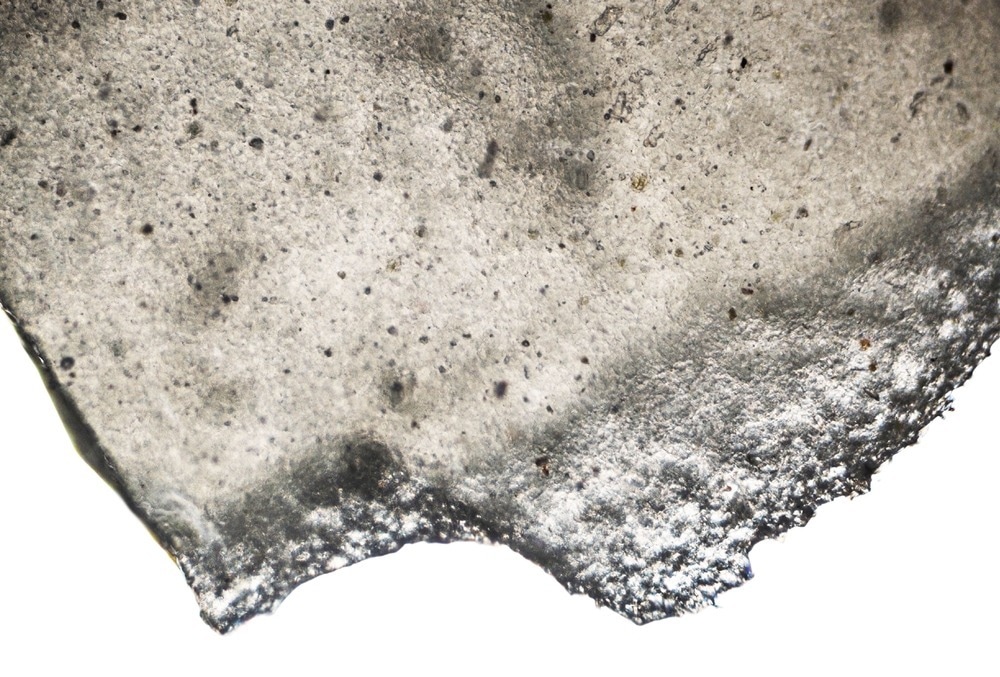Writing in the International Journal of Mechanical Sciences, scientists from Harbin Institute of Technology in China have developed a force model for grinding leucite glass ceramics.

Study: Numerical simulations of grinding force and surface morphology during precision grinding of leucite glass ceramics. Image Credit: 3d_vicka/Shutterstock.com
What are Leucite Glass Ceramics?
Leucite glass ceramics have been widely evaluated for use as high-performance dental materials due to their beneficial properties such as biocompatibility, high mechanical strength, and remarkable light transmittance.
Due to their high brittleness, however, they are difficult to machine, which limits their commercial application in dental therapy. Precision grinding processes are required to fabricate reliable materials with sufficient surface integrity. Recent studies on these materials have indicated that fractures induced by cracks at the surface and subsurface determine the depth of damage.
Research has demonstrated that the removal of brittle, hard materials during grinding leads to collapses in the material and microcracks throughout. These quality issues severely impact the useful lifetime of dentures and consequently decrease the patient’s quality of life and increase associated costs.
Currently, studies on leucite glass ceramics have focused on material preparation and dental modeling, with deformation behaviors and material removal largely going unstudied and therefore poorly understood. Several papers have indicated that the brittle-to-ductile transition depth is a key factor that influences contact interaction and surface generation between abrasives and workpieces.
Grinding Force and Modeling Methods
Grinding force during preparation reflects the interaction between abrasives and materials. To optimize the process and thereby limit any potential issues with using leucite glass ceramics in dental applications, accurately predicting griding force in brittle materials is essential.
Several models have been evaluated for predicting grinding force during grinding processes to optimize parameters and improve the final product. These include finite element methods, empirical models, algorithms, and molecular dynamics. One study developed a force model, fitting the empirical coefficient based on analysis of grinding parameter influence on soda-lime glass and alumina ceramics.
Whilst empirical models have proven beneficial, they are not without some serious challenges. Despite their high prediction accuracy, different materials and grinding angles can create large errors in the models that are difficult to overcome. Other methods require substantial amounts of data to accurately predict grinding force effects.
Molecular dynamics and finite element methods possess issues with accurate simulation of a wide range of abrasives and cannot accurately predict random parameters such as abrasive size and position distribution. Genetic algorithms and neural networks have proven promising in research, displaying higher accuracy than other modeling methods.
Aside from grinding force, surface morphology is a key factor that can influence the efficient production of durable and reliable leucite glass ceramic-based dental materials. This parameter helps researchers to accurately evaluate surface integrity and grinding quality. However, studies have not focused on this factor until recently.
To improve modeling and accurately investigate the contact interactions between workpieces and abrasives, theoretical models need to be developed which consider several factors such as strain effect rate, random abrasive size and position distributions, elastic-to-ductile transition depth, and elastic recovery.
The Study
The authors have developed a novel, improved theoretical model of grinding force which considers the aforementioned factors and parameters. Additionally, a surface morphology model was developed by the authors which considers several heretofore largely unexplored factors. Seventy-two papers in the current body of literature were analyzed in the research.
Nanoindentation tests were employed to measure the material’s mechanical properties. Grinding experiments were performed to verify model accuracy. Experimental results and theoretical models were used to reveal the influence of grinding parameters and abrasive size.
Study Conclusions
The effect of multiple parameters on the surface morphology of leucite glass ceramic materials and grinding force was revealed in the research. Experimental observation and theoretical models provided pertinent information which can help to optimize the fabrication processes of these important dental materials.
Predicted forces agreed with experimental observations, with a 10% margin of error in the force model, which was within acceptable levels. Roughness and surface morphology values agreed with experimental results, with a 15% margin of predicted errors in the surface roughness model, again within acceptable levels. Errors could be due to factors such as wheel imbalance and spindle runout.
Beneficial processing strategies, according to the authors, are high grinding speed, small grinding depth, large abrasive size, and low feed speed. Implementing these strategies will overcome the negative effects of grinding force upon leucite glass ceramics. In terms of surface quality, low feed speed, small grinding depth, small abrasive size, and high grinding speed are beneficial.
However, low grinding depth, small abrasive size, and low feed speed have negative effects on material removal. The authors have stated that achieving efficient griding with minimal material damage requires correct optimization of grinding parameters and abrasive wheel size in agreement with the theoretical model developed in the research.
More from AZoM: Reflection Electron Microscopy for Crystal Analysis
Further Reading
Zhang, Y et al. (2022) Numerical simulations of grinding force and surface morphology during precision grinding of leucite glass ceramics International Journal of Mechanical Studies 107562 [online, pre-proof] sciencedirect.com. Available at: https://www.sciencedirect.com/science/article/pii/S0020740322004556?via%3Dihub
Disclaimer: The views expressed here are those of the author expressed in their private capacity and do not necessarily represent the views of AZoM.com Limited T/A AZoNetwork the owner and operator of this website. This disclaimer forms part of the Terms and conditions of use of this website.